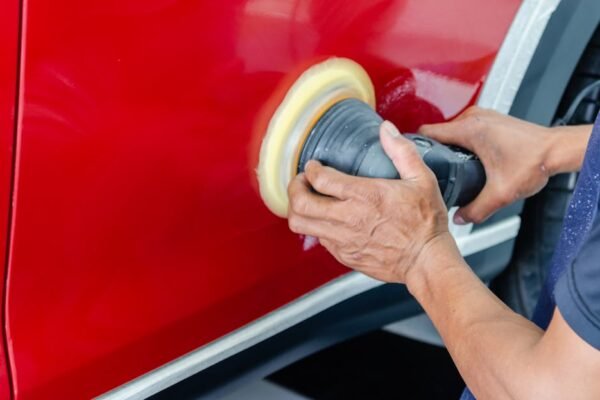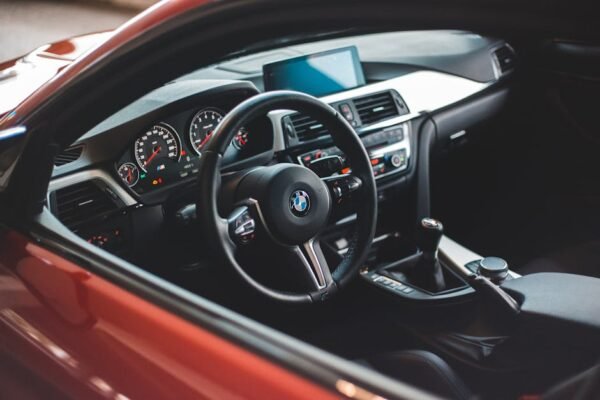Introduction to Advanced Driver-Assistance Systems
{“type”:”img1″,”src”:”https://mostmotors.com/wp-content/uploads/2024/03/fileUpload-14.jpg”,”alt”:”futuristic car dashboard”}As vehicles become more sophisticated, the advent of Advanced Driver-Assistance Systems (ADAS) has revolutionized the automotive industry. Offering a blend of safety and convenience, ADAS comprises a variety of technologies designed to aid drivers and enhance vehicle safety. This extensive guide delves into the top-rated systems that are redefining the driving experience for new car owners.
Understanding the significance of these systems is crucial for making informed decisions about your next vehicle purchase. ADAS technologies range from basic functions like parking assistance to more complex systems such as autonomous driving aids, each playing a pivotal role in shaping the future of driving.
The integration of ADAS in new cars is not just a trend; it's a movement towards reducing road accidents and enhancing driver comfort. This chapter explores the fundamentals of ADAS, providing a solid foundation for our journey into the top-rated systems available in new cars today.
Before making your next vehicle investment, considering the type of ADAS technology it offers can significantly impact your driving experience. As we navigate through this guide, remember that the best ADAS is the one that suits your driving style and safety needs.
From collision avoidance systems to adaptive cruise control, let's explore how these technologies are setting new standards in vehicle safety and driver assistance.
Top Rated Adaptive Cruise Control Systems
{“type”:”img1″,”src”:”https://mostmotors.com/wp-content/uploads/2024/03/fileUpload-15.jpg”,”alt”:”car on highway”}Adaptive Cruise Control (ACC) stands out as a prime example of how ADAS technologies are enhancing driving safety and convenience. Unlike traditional cruise control, ACC adjusts your vehicle's speed to maintain a safe distance from the car ahead, making long journeys less tiring and safer.
The effectiveness of ACC systems varies among manufacturers, with some offering more advanced features like stop-and-go functionality, which automatically adjusts your speed in heavy traffic, enhancing overall driveability.
Recent advancements in ACC technology have seen the integration of machine learning and radar systems, enabling vehicles to adapt to diverse driving environments more efficiently. These innovations are making ACC not only more reliable but also more intuitive for drivers, aligning with the demands of modern driving scenarios.
When selecting a new car, considering the type of ACC system it incorporates can make a significant difference in your driving experience. High-rated systems offer seamless operation, minimal driver intervention, and enhanced safety, making them a must-have feature for many new car buyers.
This section has outlined the core benefits and capabilities of adaptive cruise control, underlining its importance as a top-rated ADAS technology in new cars.
Advanced Parking Assistance Systems
Parking assistance technology represents another cornerstone of ADAS, easing the often-daunting task of parking in tight spaces. Advanced systems go beyond basic rear-view cameras, offering features like automated parking and real-time space measurement.
The evolution of parking assistance technology has introduced systems that can detect suitable parking spots and automatically steer your car into the space, requiring minimal driver input. This not only reduces the stress associated with parking but also minimizes the risk of parking-related accidents.
Top-rated parking assistance systems employ a combination of sensors, cameras, and artificial intelligence to navigate tight parking scenarios with precision. The sophistication of these systems can vary, with some offering full autonomy in parking procedures, while others require slight driver assistance.
Investing in a car with advanced parking assistance can transform your parking experience, turning a typically stressful task into a seamless operation. The value of these systems lies in their ability to enhance safety, convenience, and peace of mind for drivers, especially in urban driving environments.
This exploration of parking assistance technology highlights its role as an indispensable feature in the landscape of ADAS, emphasizing its significance for new car buyers seeking enhanced vehicle functionality and safety.
Forward Collision Warning and Automatic Emergency Braking
Forward Collision Warning (FCW) and Automatic Emergency Braking (AEB) systems are critical safety features within the ADAS ecosystem. FCW alerts the driver to potential collisions with vehicles or obstacles ahead, giving them more time to react. In contrast, AEB takes a step further by automatically applying the brakes if the driver does not respond in time, potentially preventing accidents.
The accuracy and responsiveness of these systems are paramount, with top-rated options utilizing advanced sensors and algorithms to detect imminent threats accurately. These technologies work together to significantly reduce the likelihood of frontal collisions, enhancing overall road safety.
The integration of FCW and AEB in new vehicles has been highly encouraged by safety organizations worldwide, reflecting their effectiveness in mitigating accident risks. Cars equipped with these advanced systems not only offer greater protection for passengers but also contribute to a safer driving environment for all road users.
Selecting a vehicle with robust FCW and AEB systems is an investment in safety. The advancements in these technologies have set new benchmarks in automotive safety, offering drivers and passengers unparalleled protection and confidence on the road.
The significance of FCW and AEB in the context of ADAS cannot be overstated. This section has shed light on their vital role in preventing accidents and safeguarding lives, underscoring their status as top-rated safety features for new cars.
Lane Keeping Assist and Lane Departure Warning Systems
Completing our exploration of top-rated ADAS technologies, Lane Keeping Assist (LKA) and Lane Departure Warning (LDW) systems provide crucial support in maintaining lane discipline. LKA actively helps to keep the vehicle centered in its lane, while LDW alerts the driver if the vehicle begins to drift unintentionally.
These systems are particularly beneficial on long drives and in situations where driver attention may wane. By offering timely alerts and corrective steering inputs, LKA and LDW contribute to a safer and more controlled driving experience.
While both technologies aim to prevent unintended lane departures, their approach and sophistication can vary widely. Top-rated systems seamlessly integrate with the vehicle's steering mechanism, offering intuitive support without overwhelming the driver.
The introduction of these lane-assist technologies marks a significant leap forward in vehicle safety. Ensuring your next car is equipped with effective LKA and LDW systems can markedly enhance your driving safety, especially on highways and in challenging driving conditions.
This final section emphasizes the importance of lane-assist technologies within the ADAS framework. Incorporating LKA and LDW in new vehicles not only augments safety but also elevates the overall driving experience, making them indispensable for modern drivers.





